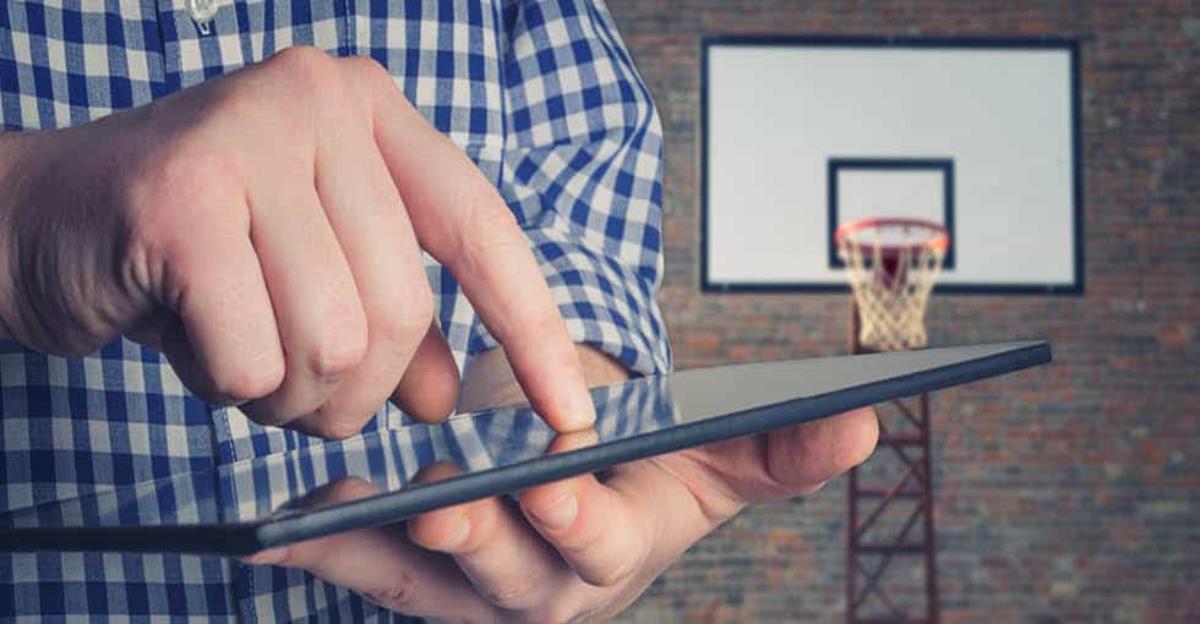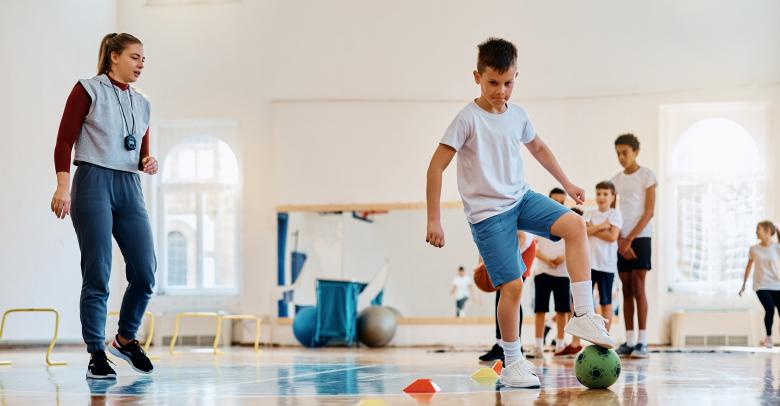In our previous blog post, What Comes First, Pedagogy or Technology?, I stated that technology can help us see the world with a new lens and argued that before we can accomplish that task, we must understand the destination of where we want our students to go. We must explore the learning goal and plan for what students should know, understand, and be able to do, and only then can we plan to use specific tools or activities to guide students in reaching that destination.
In order to implement technology in a way that supports student learning goals, there are key questions an educator must consider. In “Using Multiple iPads in #PhysEd,” Nathan Horne (@PENathan) and Patty Kestell (@pk_lv2teachpe), both elementary physical educators, share their tips, successes, and challenges when using multiple iPads in their physical education programs.
Listed below are Kestell and Horne’s key questions and my explanations as to why each is so important to consider prior to integrating technology:
1. What learning outcome will this activity help your students achieve?
When planning for lessons, it is important to start with what students should know, understand and be able to do based on the learning goals. Once you have reflected and planned for where you want your students to go, only then are you ready to look at what activities/tools can be used to support your students in reaching the learning goal. Technology should be integrated for a specific purpose, and not just as a fun gadget and tool.
2. Does the choice of device best serve the student’s needs in learning this skill?
What devices are available for the lesson? If Chromebooks or iPads are available, how will the environment and classroom management be set up so students can move freely without damaging a device? Do you have a tech cart/charging station that they can place their Chromebooks on while they are moving? The gymnasium that I taught in was connected to a stage, so I would have my students put their devices on the stage while they were completing an activity or task. Some schools have bleachers that students can put their devices on. What products do you have access to that can support your lessons?
If you have students bringing their own devices, where will they put them? Do you have a safe area where they can store/charge their devices? In Bring Your Own Device (BYOD) schools, some physical educators will use a calculator wall pocket chart to store student devices safely. In schools where students have access to Chromebooks, laptops or iPads/tablets, the physical educator may have a storage cart for students to store their devices.
3. Can you use the device(s) efficiently to maximize physical activity while using technology?
There is a notion that students are on their devices for the majority of the day and, therefore, some educators do not want to encourage them further by having students use their devices, or the school’s devices, during their classes.
A counter argument I use is that technology is not going anywhere. Instead of telling students to put their devices away, physical educators need to embrace technology and model how technology can be used to understand our bodies and become confident, competent, and motivated movers. We can integrate tools to teach our students how to track how many steps they take in a day, monitor their heart rate levels and learn what each level means, create their own personal workout plans, or confidently geocache with their families during the weekend.
4. Do you have the resources needed to teach this lesson? Wi-Fi, YouTube access, apps available on devices, a small ratio of students per device, etc.?
When planning to use technology to support a learning goal, it is important to test out all tools that will be used in the facility the students will be in. There are many educators who do not have access to Wi-Fi in their teaching spaces. This should be considered prior to execution of the lesson to make sure a plan B is set in place if Wi-Fi is not available or if it is down during the lesson.
Do you have access to YouTube, or is it blocked? If it is blocked, are there options to download a video and upload to Dropbox? A great trick to download a YouTube video is to type ss in between the period and the y of the URL link of the video, i.e. www.ssyoutube… If the school is BYOD, you will want to make sure students using their own devices have downloaded the necessary app(s) prior to class.
5. Does the use of technology help students create, communicate, collaborate, explore, connect, extend their learning, and encourage them to be lifelong learners?
Many people argue that our students are digital natives, are more engaged when using technology, and know how to use it appropriately. Even though students may be on their devices the majority of the day, that does not mean they know how to use these devices properly to become better citizens, learners, and movers. It is our responsibility as educators to make sure the technology they are using can help them reach their learning goals. Technology should be used to encourage lifelong learning AND lifelong moving.
Technology should be used for the purpose of giving students the opportunity to create/experience/do something new that they were not capable of before. Bringing an expert into your classroom virtually by using Zoom, Skype, Facetime or a Google Hangout can help students understand a real-world application to the learning goals they are focusing on.
Technology can help us guide our students in seeing and accessing the world through a new lens. In order to implement technology in a way that supports student learning goals, there are key questions an educator must consider. Once these questions have been considered and thought through, you can then plan to use specific tools or activities to guide students in reaching the learning destination and support and streamline your workflow.
This blog is adapted from the original article “Technology in Physical Education,” written by Naomi Hartl and published in the Saskatchewan Physical Education Association (SPEA) On The Move Journal in April 2017, and has been posted with permission.
Naomi Hartl
Naomi Hartl holds a Bachelor of Science degree in Kinesiology and a Bachelor of Education. She has four years’ experience teaching physical education and works to help further the use of technology in teaching physical education.
Read more posts by Naomi Hartl –>







Leave a Reply